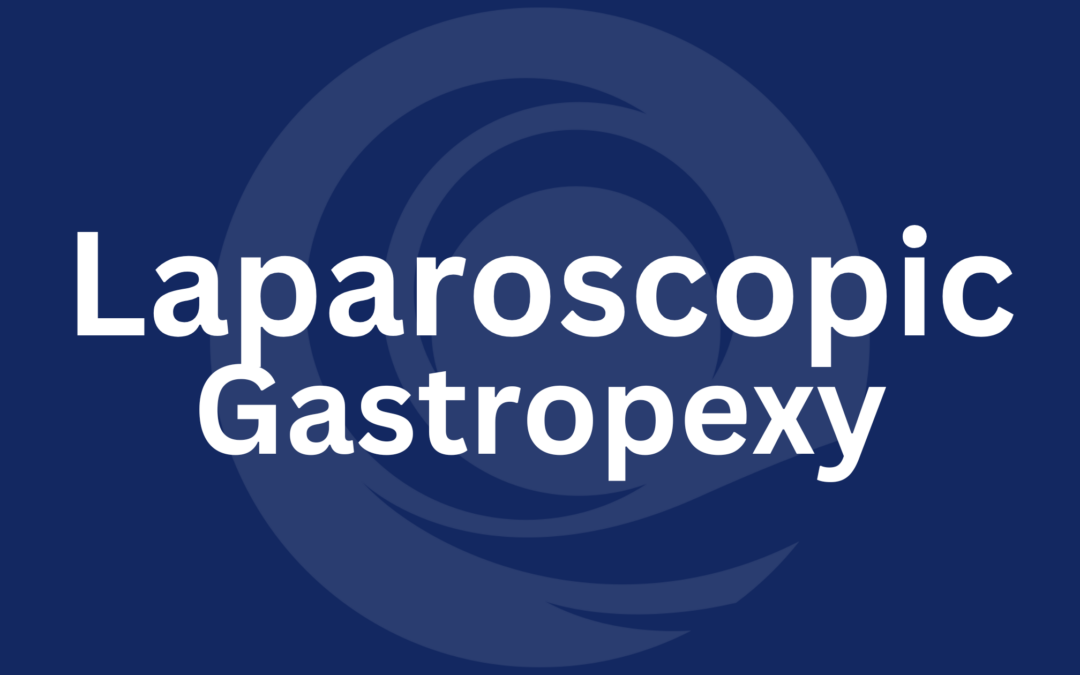What is Laparoscopic Gastropexy?
Laparoscopic gastropexy is a minimally invasive surgical procedure designed to prevent gastric dilatation-volvulus (GDV), also known as bloat. This life-threatening condition occurs when the stomach fills with gas, twists on itself, and cuts off blood supply.
Gastropexy surgically attaches the stomach to the abdominal wall, preventing it from twisting. While traditional open surgery has been the standard for years, laparoscopic gastropexy offers a safer, faster, and less painful alternative.
A Brief History of Gastropexy in Veterinary Medicine
🔬 Early GDV Treatments (Pre-1970s): Before surgical intervention became common, dogs with GDV had poor survival rates. Emergency surgery was the only option, but without preventive measures, recurrence was high.
⚠️ Introduction of Open Gastropexy (1970s–1990s): Vets began performing traditional (open) gastropexy during GDV surgeries or as a preventive measure in at-risk breeds. This involved making a large incision and suturing the stomach to the body wall, significantly reducing the risk of future GDV. However, recovery was long, and complications were common.
📈 The Rise of Laparoscopic Surgery (2000s-Present): With advancements in minimally invasive techniques, laparoscopic gastropexy became a preferred option in large-breed dogs. This approach reduces incision size, shortens recovery time, and minimizes surgical trauma while providing the same life-saving benefits.
Which Dogs Benefit from Laparoscopic Gastropexy?
This procedure is recommended for large and giant breeds prone to GDV, including:
🐶 Great Danes (Highest risk—nearly 40% develop GDV)
🐶 German Shepherds
🐶 Labrador Retrievers
🐶 Standard Poodles
🐶 Doberman Pinschers
🐶 Weimaraners
🐶 Setters (Irish & Gordon)
Additionally, deep-chested mixed-breed dogs are also at risk. Many owners choose to have a laparoscopic gastropexy performed at the time of spaying or neutering to prevent GDV before it becomes an emergency.
How is the Procedure Performed?
Laparoscopic gastropexy is performed under general anaesthesia and involves the following steps:
1️⃣ Small Incisions: The surgeon makes two tiny incisions in the abdomen (compared to a large single incision in open surgery).
2️⃣ Insertion of Laparoscopic Camera & Instruments: A tiny camera (laparoscope) provides a high-definition view of the stomach and abdominal wall.
3️⃣ Gastropexy (Stomach Attachment): Specialised instruments are used to secure the stomach to the right abdominal wall, preventing future twisting.
4️⃣ Closure: The incisions are sutured or sealed with surgical glue.
⏳ The procedure takes 30–45 minutes, and most dogs go home the same day!
Benefits of Laparoscopic Gastropexy Over Traditional Surgery
✔️ Minimally Invasive: Smaller incisions mean less pain and quicker healing.
✔️ Shorter Recovery: Most dogs return to normal activity in a few days (compared to weeks with open surgery).
✔️ Lower Risk of Complications: Fewer wound infections and reduced postoperative discomfort.
✔️ Proven Prevention: Gastropexy reduces the risk of GDV recurrence to less than 5% in dogs predisposed to bloat.
Potential Risks and Considerations
Laparoscopic gastropexy is very safe, but minor risks include:
⚠️ Mild swelling or discomfort at incision sites (temporary).
⚠️ Anesthesia risks, though rare, especially in older or compromised dogs.
⚠️ Potential for bloating – While gastropexy prevents twisting, it does not stop bloating itself. Owners should still manage diet and exercise to reduce risk.
What Are the Alternatives?
If laparoscopic surgery is not available, options include:
📌 Traditional Open Gastropexy – Still effective but requires larger incisions and longer recovery.
📌 Emergency GDV Surgery – If a dog develops GDV, emergency surgery is needed, but recurrence risk remains high without gastropexy.
📌 Lifestyle Management – Slowing eating, avoiding exercise after meals, and using elevated feeders can help reduce the risk but do not prevent stomach twisting.
Final Thoughts
Laparoscopic gastropexy is a game-changer for large-breed dogs, offering a minimally invasive, highly effective solution for preventing GDV. With a short recovery period and proven success, this procedure is quickly becoming the standard of care for at-risk breeds.
If you have a large or deep-chested dog, ask your veterinarian whether laparoscopic gastropexy should be part of their health plan!

